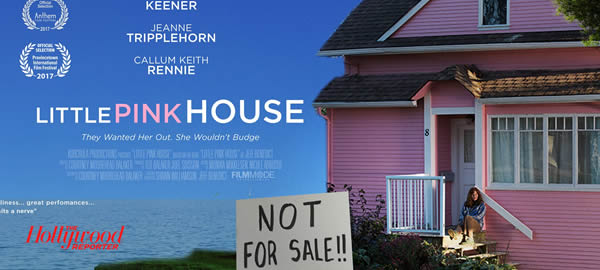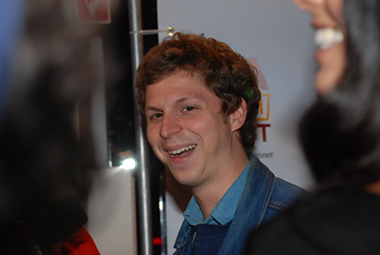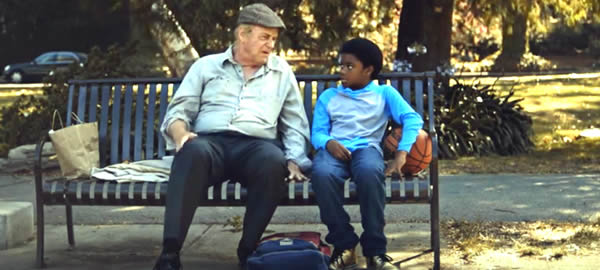(Originally published on Blogcritics.org)
Two films debuting this spring explore the challenge and cost of following your dreams. Documentary My Way (theatrical release on Febrary 20) follows rock musician Rebekah Starr as she leaves her Pennsylvania home for Los Angeles to make a music video. Narrative drama
Kumiko, the Treasure Hunter (U.S. release in March) brings us along with a 30-something Japanese woman on a treasure map inspired quest. Both ladies discover that following your dreams has a cost.
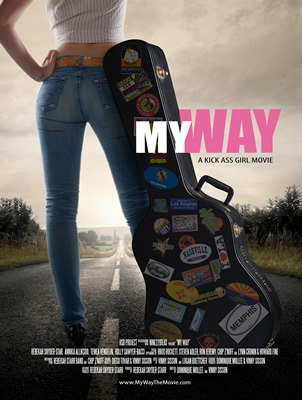 My Way, tag-lined “A Kick-Ass Girl Movie”, starts in Kittanning, Pennsylvania. Never heard of it? Exactly. The small town, industrial nature of the community was what drove Rebekah to begin her quest. We learn about her childhood, her childhood best friend who became her husband (and drummer), and her struggle to fit in working at her uncle’s construction company. She doesn’t.
My Way, tag-lined “A Kick-Ass Girl Movie”, starts in Kittanning, Pennsylvania. Never heard of it? Exactly. The small town, industrial nature of the community was what drove Rebekah to begin her quest. We learn about her childhood, her childhood best friend who became her husband (and drummer), and her struggle to fit in working at her uncle’s construction company. She doesn’t.
There is a whiney section of interview and commentary with authors/gender studies’ experts, Lynn Cronin and Howard Fine. They blame Rebekah’s problems in the workforce on sexism and “traditional gender biases”. I give Rebekah more credit than that. I don’t think she would fit in anywhere, except as a rockstar.
Rebekah and her tambourine-playing band-mate Annika, whose Estonian accent adds to some of the film’s humor, decide to drive to LA and make a music video. Annika suggested that they film their trip across country. They start with hired photographers, then fire them and buy their own camera.

This would have ended up a mish-mash of unusable video clips, but for the efforts of directors Dominique Mollee and Vinny Sisson. They recorded interviews with Rebekah, Annika, Rebekah’s husband and 80’s rock stars Rikki Rockett (Poison), Steven Adler (Guns & Roses) and Chip Z’Nuff (Enuff Z’Nuff). My favorite observation came from Rockett who suggested that all rock bands should travel with a therapist.
The interviews illuminated and universalized Rebekah and Annika’s quest. Molee and Sisson then combined the interviews and the footage the women took along the way and sculpted them into an excellent cinematic narrative.
Did Rebekah pay a price for following her dreams? There were a lot of costs, including her husband who stayed in Pennsylvania.
My Way won an Award of Merit at the Lucerne International Film Festival 2012, and a Silver Ace Award and the Las Vegas Film Festival 2013.
Sacrificing for your dreams is also the theme of Kumiko, the Treasure Hunter. The woman on this quest, Kumiko, is touchingly played by Rinko Kikuchi (47 Ronin, Pacific Rim).
Kumiko, like Rebekah, doesn’t fit into the corporate world. But, the opposite of Rebekah, Kumiko is a big city girl whose dreams take her a totally different direction.
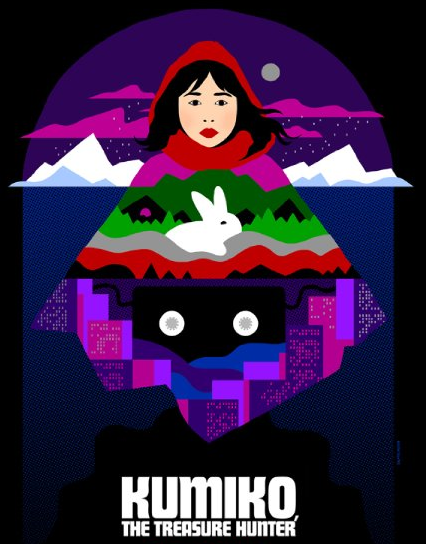 We first see Kumiko on a beach searching for treasure. She finds an old VHS tape buried under a rock in the sand. The tape is the American film Fargo. Kumiko misinterprets it as instructions on how to find the briefcase full of money thatFargo character Jerry Lundegaard buries along a fence.
We first see Kumiko on a beach searching for treasure. She finds an old VHS tape buried under a rock in the sand. The tape is the American film Fargo. Kumiko misinterprets it as instructions on how to find the briefcase full of money thatFargo character Jerry Lundegaard buries along a fence.
Her obsession with her quest for this treasure gives her grit and purpose in a life which is otherwise hopeless and lonely. Lonely, except for her pet rabbit, Bunzo.
Kumiko, the Treasure Hunter is a beautifully structured and photographed film.
Cinematographer Sean Porter took many of the shots, which could have easily been done at ground level, from aerial perspectives, emphasizing loneliness and how one young woman can be isolated in the most populous city in the world. Except for when she is in her office worker uniform, Kumiko is always in a bright orange hoodie, reminiscent of Jerry Lundegaard’s snow jacket. She becomes a bright punctuation point of life in a bland, cold world.

Sections of the film are told with such visual precision that dialogue is almost superfluous. The first six minutes are all visuals and music. We become aware of Kumiko’s increasing withdrawal from the world through a variety of examples, such as when confronted with her overflowing mail box, she just stuffs everything back into it.
The dialogue is in both Japanese and English as appropriate to the story. The emotions it transmits transcend language and culture.
Kumiko, too, pays a price for her quest, but I won’t spoil it for you, other than that Bunzo the rabbit is there. Kumiko, the Treasure Hunter has been nominated for two Film Independent Spirit Awards: Rinko Kikuchi, for best actress, and David Zellner (Kid-Thing, Goliath) for best director.
Both films urge us to follow our dreams, no matter the cost.


